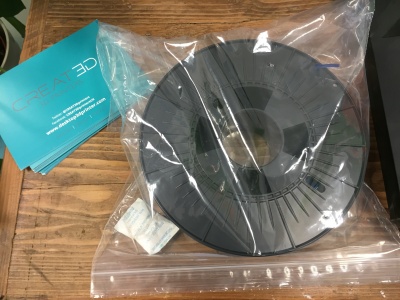CREAT3D handy 3D printing tips: Storing your filament13 August 2015 | Sabina Gonzalez-George  How to store your 3D printing materials correctlyHave you ever printed a model successfully and then used the same file and settings a week later only to find the print has failed? More often than not, this can be due to the incorrect storage of your filament.
Read on for our handy guide about how to store your 3D printing materials correctly.
The filament problemA number of popular 3D printing materials such as PLA, PLA/PHA, XT, ABS, PVA and Nylon are hygroscopic. This means they naturally absorb moisture from the air around us which can affect the performance of the material during printing.
The moisture absorbed by the filament can cause one or a combination of the following symptoms:
 Prevention is better than cure It's always best to try to avoid moisture absorption into your filament in the first instance.
As part of our training sessions we talk about filament storage to get the best out of your 3D printer, particularly when swapping between colours or materials, or for when not printing daily.
The other option is cartridge-based 3D printers such as the CubePro and Cube 3 from 3D Systems, which are specially designed to store filament in sealed cartridges, prolonging the life of the material.
Top tips for storing 3D printing filamentHere's our top tips for storing your filament correctly:
If you are not using your 3D printer for more than a day or so, unload the filament and store it away. PVA and Nylon should be removed immediately after printing as these can absorb moisture with a matter of hours
A resealable freezer bag or a plastic sealable container work well
A silica gel pouch or similar desiccant will absorb any moisture that is inside the air tight container when sealed
Filament storage is just as important as accurate calibration, good 3D modelling and proper maintenance of your 3D printer. We always recommend you use good quality 3D printing materials and then look after them to keep your 3D printer performing at its best.
To help with filament longevity the CREAT3D Care Kit includes resealable bags, desiccant pouches and a number of other useful tools for everyday 3D printing.
|
| ||
